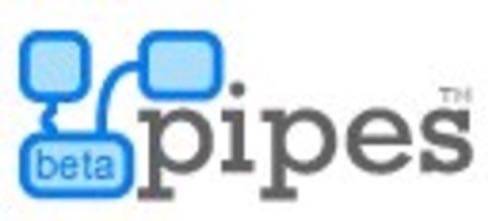Here are some of the highlights from the week’s Web Tech action on ReadWriteWeb. On the product side we covered announcements by Google about Gears and App Engine, we looked at some compelling Yahoo! Pipes apps, we checked out Strands Lifestreaming, and we reviewed promising Semantic Apps Faviki and Freebase. On the trends side we analyzed the contentious Semantic Search market, we looked at Google’s Android vs iPhone, we put the Social Networking battle between Google and Facebook in context, and we explored more social media trends.

Web Apps
Google Gears Turns One: Future is in Open Standards
Google Gears, the offline web application API it debuted last year at its developer conference, turned one this week. To celebrate, Google dropped the company name from Gears. The name change is a symbolic move aimed at reinforcing Google’s commitment to working with existing standards communities and helping them to define better open standards for bridging online applications and the offline world.

See also: Google App Engine Announces Pricing Plan, APIs, Open Access; Why Google is Wooing Web Developers
The Ultimate Yahoo! Pipes Creations List
Yahoo! Pipes is one of the coolest ways to mashup the RSS feeds of various sites and sources to get the data you want. Since our initial coverage of Yahoo! Pipes, thousands of creations are now available. However, finding the best picks can be tough. ReadWriteWeb has done the hardest part and comprised a list of some of the best Yahoo Pipes created by users. We give you the ultimate Yahoo! Pipes list.

Strands Lifestreaming: What They’re Doing and Invites for Readers
Recommendation service Strands.com launched a lifestreaming service this week that aims to pull together the company’s wide range of services in particular media and online activity into one central place for users to share socially. The new Strands is a way to share your music, bookmarks, blog posts and other activity with friends, family and groups. It’s a major entry into one of the most interesting sectors of the new web. We give it a mixed review…

See also: Recommendation and RSS: A Look at Two Readers Filtering the Noise
Faviki is a new social bookmarking tool that offers something that services like Ma.gnolia, del.icio.us, and Diigo do not – semantic tagging capabilities. What this means is that instead of having users haphazardly entering in tags to describe the links they save, Faviki will suggest tags to be used instead. However, unlike other services, Faviki’s suggestions don’t just come from a community of users and their tagging history, but from structured information extracted straight out of the Wikipedia database.

Freebase: Dispelling The Skepticism
Freebase, the first product of semantic web company Metaweb, is an open, semantically marked up database of information that we called one of the “10 semantic apps to watch” last year. With $57.4 million in funding, a smart team, and a tech legend in Danny Hillis at the helm, Metaweb is considered to be one of the most serious players in the Semantic Web space. Yet the company’s
efforts to date have been met with skepticism. Particularly, people have asked how is Freebase different to Wikipedia? Jamie Taylor, the Minister of Information at Metaweb, spoke at the SemTech 2008 Conference that took place in San Jose last week in an effort to dispel some of that skepticism.

SEE MORE WEB APPS COVERAGE IN OUR WEB APPS CATEGORY
Web Trends
Semantic Search: The Myth and Reality
For a few years now people have been talking about semantic search.
Any technology that stands a chance to dethrone Google is of great interest
to all of us, particularly one that takes advantage of long-awaited and much-hyped semantic technologies. But no matter how much progress has been made, most of us are still underwhelmed by the results.
In head-to-head comparisons with Google, the results have not come out much different. What are we doing wrong?

See also: Making the Web Searchable: The Story of SearchMonkey
Android Is Out For iPhone Blood
Wednesday, at Google’s I/O Event, the company demonstrated their Android prototype phone, a device which has been greatly improved since its last public outing at this year’s CES and Mobile World conferences. Today, Android looks classy enough that you half-expected them to pull a Steve Jobs and announce that you could run out and buy it right now. During the demo, the company showed off some of the applications that will run on Android – like a Google Maps Street View app that drew cheers from the crowd. From the buzz surrounding the Google Phone at this event, it’s clear that Android has a shot at knocking that other touchscreen phone off its pedestal.

See also: Google’s Android: How Will it Compare to iPhone?
The Social Networking Arms Race
Last November, when Google launched Open Social we asked readers if Facebook would join Google’s platform. The results were split right down the middle, but as we get farther from the Open Social launch, and the two sites continue to launch competing APIs (Google FriendConnect vs. Facebook Connect, for example — the former banned by Facebook), that seems less and less likely. This is becoming a social networking cold war.

See also: How Many Friends is Too Many?
The Fork in the Road for Social Media
Social networking is at a major fork in the road. Down one road is adding more features to a walled garden and opening up just enough, so that users seldom need to leave. Most sites are going down this yellow brick road and the prize is clearly a big one. But they may end up back in Kansas. Down the other road, lies a future of being the primary repository for your connections (aka the social graph), but with this data available via open APIs to anybody who needs it. That is a utility type model, and as with any utility, it can be hugely valuable at scale.

See also: Sometimes Crowds Aren’t That Wise
Who Are The “Digitally Savvy?”
A new report put about by consumer and media research firm Scarborough Research has revealed some interesting information about the section of the U.S. population that’s being called the “digitally savvy.” These are the consumers who are more likely to own high-tech items like DVRs, satellite radios, and VoIP phones and are more likely to engage in Internet activities that include blogging, downloading music, and other web 2.0 activities. In other words – they’re us.

See also: When User-Generated Content Goes Bad
SEE MORE WEB TRENDS COVERAGE IN OUR TRENDS CATEGORY
That’s a wrap for another week! Enjoy your weekend everyone.










